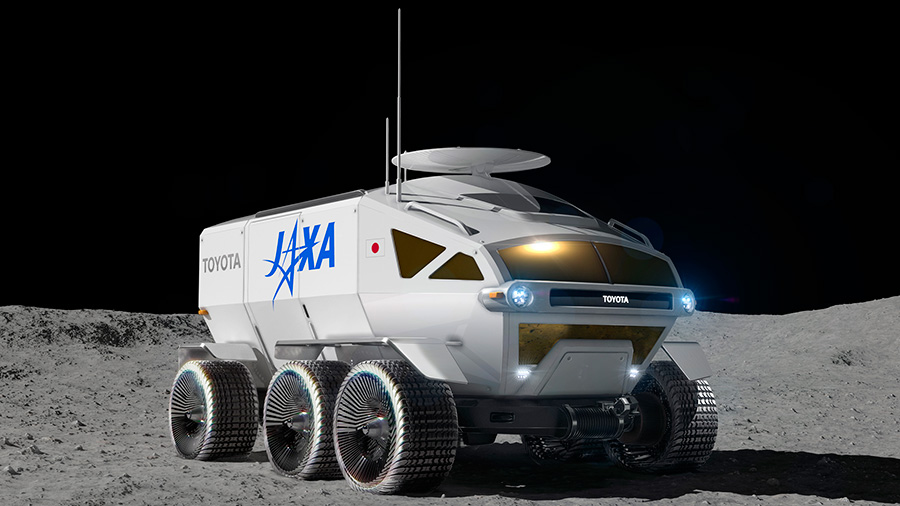JAXA, the Japan Aerospace Exploration Agency, is teaming up with the nation’s largest company to build a lunar rover. Toyota, the second largest automobile company in the world (only Volkswagen makes more cars) has signed a development deal with JAXA that will last three years. The goal? To design, build, test and evaluate prototypes for a pressurized, crewed lunar vehicle that runs on fuel-cells.
JAXA and Toyota first signaled their intention to work together back in March, 2019. At that time, they envisioned a rover with a remarkable range of 10,000 km (6,200 miles). That’s huge, considering that the Moon’s circumference at the equator is just over 10,900 km (6,773 miles.)
“Manned rovers with pressurized cabins are an element that will play an important role in full-fledged exploration and use of the lunar surface.”
JAXA President Hiroshi Yamakawa
In March, the pair proposed a vehicle with these properties:
- Length: 6.0 m; width: 5.2 m; height: 3.8 m (19.5 ft; 17 ft; 12.4 ft. About the size of two micro-buses)
- Living space: 13m3 (460 cu. ft.)
- Capable of accommodating two people (four people in an emergency)
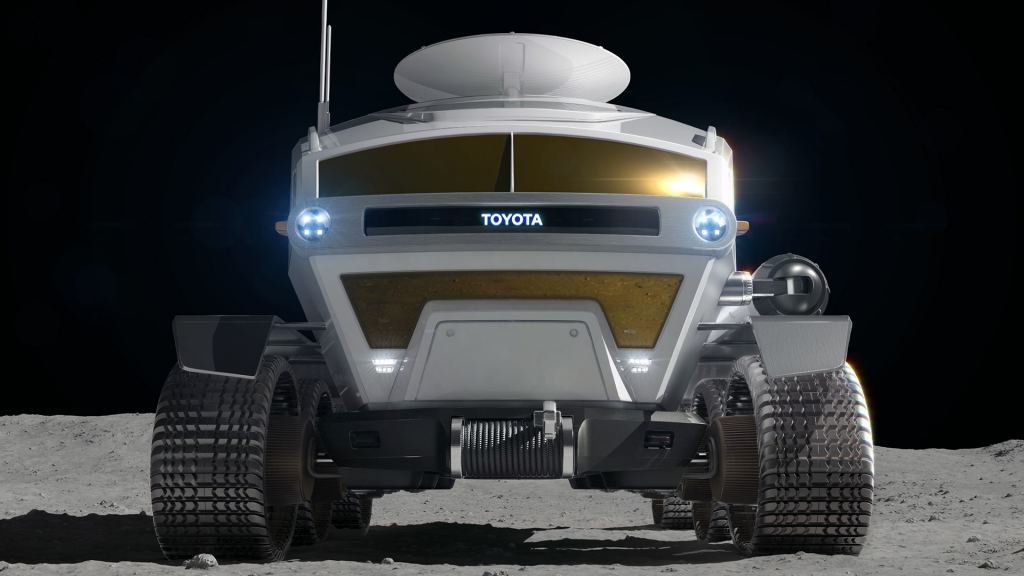
The rover will be an enclosed-body vehicle, rather than an open-body vehicle like the Apollo lunar rovers. Astronauts would be able to remove their spacesuits inside the rover, and live in it for fixed periods of time. They would be able to enter and exit the vehicle easily while wearing spacesuits, and could be controlled remotely, autonomously, or by astronauts themselves.
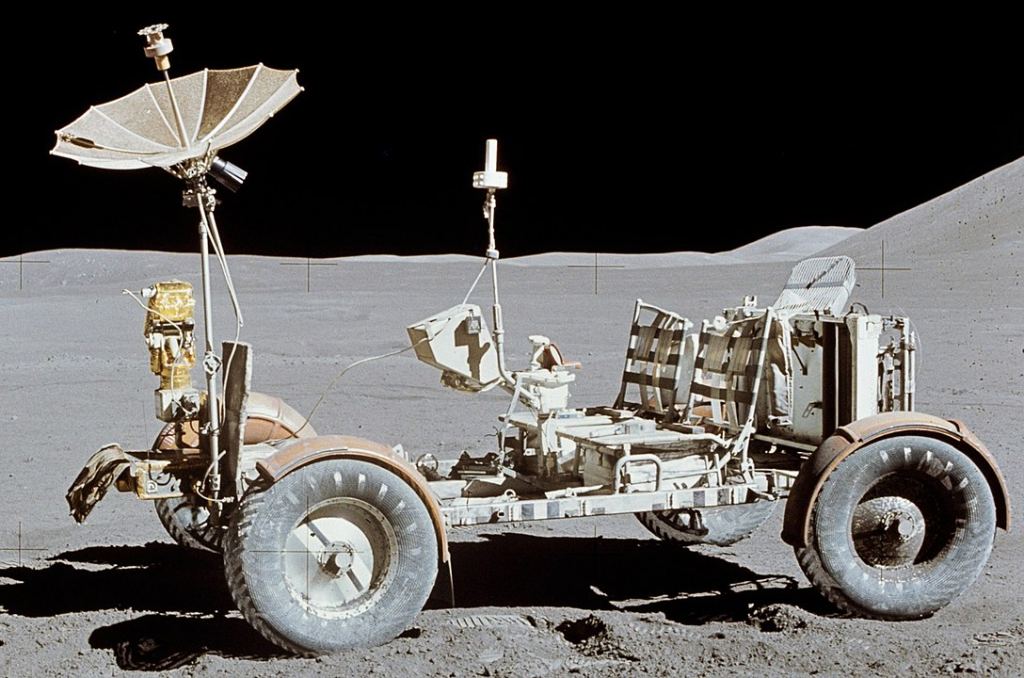
Back in March, JAXA President Hiroshi Yamakawa said, “Having Toyota join us in the challenge of international space exploration greatly strengthens our confidence. Manned rovers with pressurized cabins are an element that will play an important role in full-fledged exploration and use of the lunar surface.”
Now JAXA and Toyota have formalized their agreement, and a timeline:
- Fiscal year 2019: Identifying technological elements that need to be developed for driving on the surface of the moon; drawing up specifications for a prototype rover.
- Fiscal year 2020: Manufacturing test parts for each technological element; manufacturing a prototype rover.
- Fiscal year 2021: Testing and evaluating both the manufactured test parts and the prototype rover.
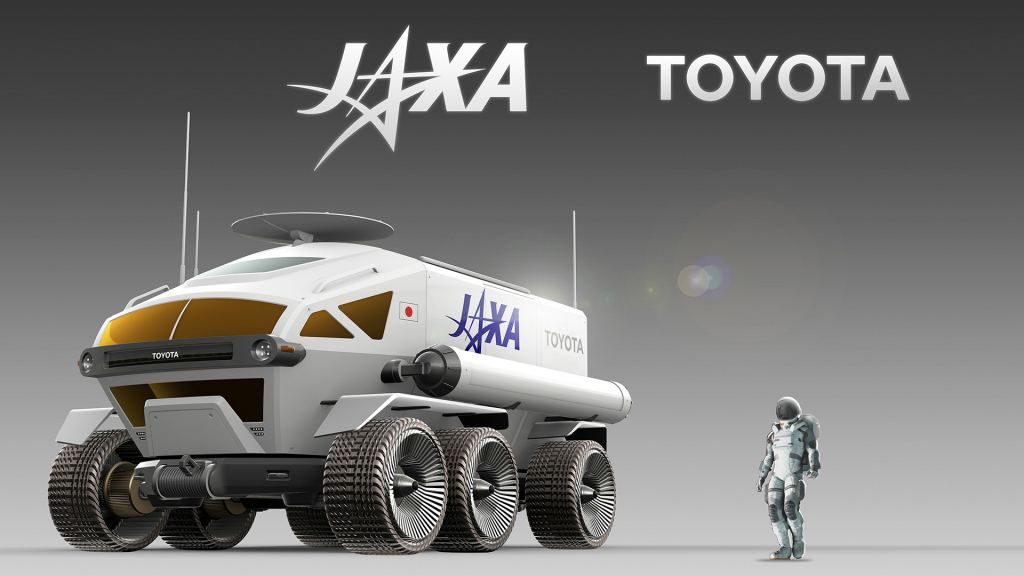
The prototype will be a modified version of a standard production vehicle, though Toyota hasn’t said which one. (But we’re guessing it’s probably not the Yaris.)
Looking into the future, the tentative launch date for a mission to the Moon with this rover is 2029:
- From 2022: Manufacture and evaluation of a 1:1 scale prototype rover; acquisition and verification testing of data on driving systems required to explore the moon’s polar regions
- From 2024: Design, manufacture, and evaluation of an engineering model of the rover; design of the actual flight model
- From 2027:Manufacture, and performance and quality testing of the flight model
“As an engineer, there is no greater joy than being able to participate in such a lunar project…”
Shigeki Terashi, Toyota Executive Vice President
“As an engineer, there is no greater joy than being able to participate in such a lunar project by way of Toyota’s car-making and, furthermore, by way of our technologies related to electrified vehicles, such as fuel cell batteries, and our technologies related to autonomous and automated driving,” said Shigeki Terashi, Toyota Executive Vice President. “I am filled with great excitement.”
For JAXA and Toyota, this project is not just about exploring the Moon. It’s also about developing technologies that contribute to better and cleaner transportation here on Earth. Fuel cells take in only oxygen, and emit only water.
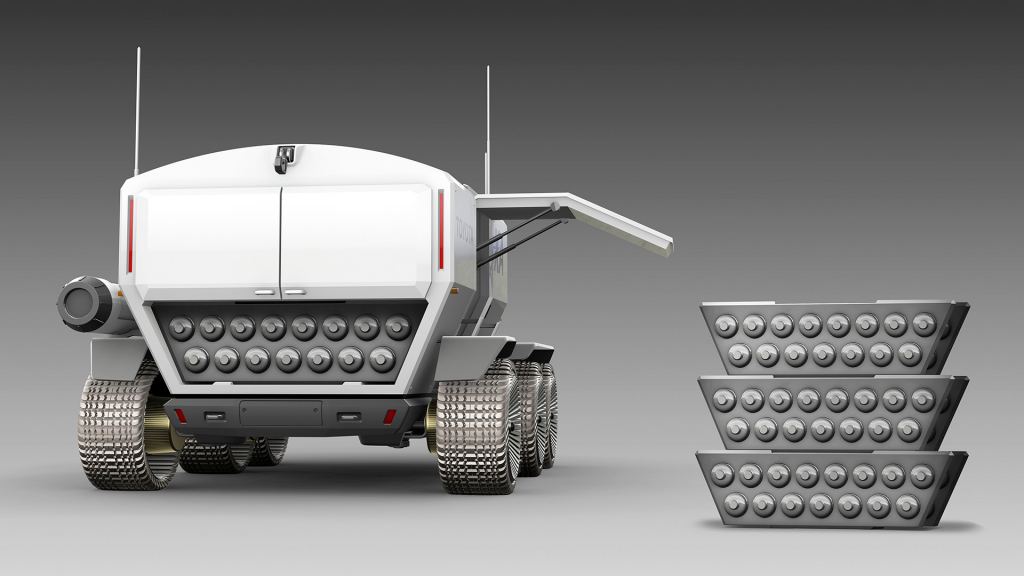
“Toyota believes that achieving a sustainable mobility society on Earth will involve the coexistence and widespread use of electrified vehicles, such as hybrid electric vehicles, plug-in hybrid electric vehicles, battery electric vehicles, and fuel cell electric vehicles,” said Terashi. “For electrification, fuel cell batteries represent an indispensable technology.”
“For wide ranging human exploration of the moon, a pressurized rover that can travel more than 10,000 km … is a necessity.”
JAXA Vice President Koichi Wakata
“Lunar gravity is one-sixth of that on Earth. Meanwhile, the moon has a complex terrain with craters, cliffs, and hills. Moreover, it is exposed to radiation and temperature conditions that are much harsher than those on Earth, as well as an ultra-high vacuum environment,” said JAXA Vice President Koichi Wakata. “For wide ranging human exploration of the moon, a pressurized rover that can travel more than 10,000 km in such environments is a necessity.”
JAXA and Toyota both have solid track records as innovators. JAXA’s Hayabusa 2 mission is currently gathering samples from asteroid Ryugu for return to Earth, their second sample return mission. Toyota is a pioneer in the alt-energy vehicle market with their Prius passenger car.
This partnership has great potential and it’ll be fascinating to see the results.

